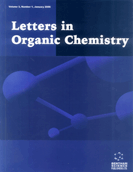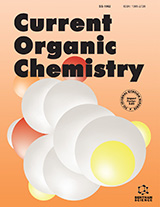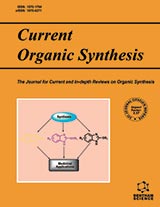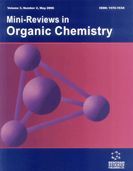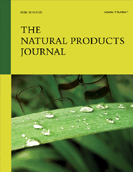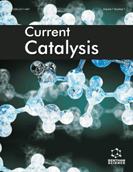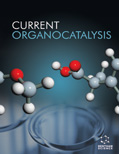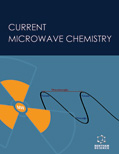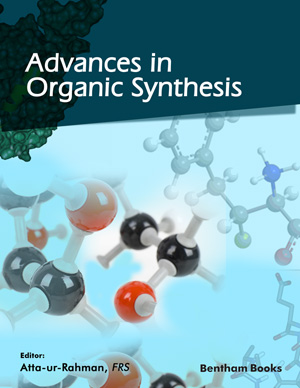Abstract
A series of thienylchalcones with fluoro and trifluoromethyl derivatives were synthesized and evaluated for their capability to inhibit human monoamine oxidase A and B. The chemical structures of the compounds have been ascertained by means of their 1HNMR, 13CNMR, mass spectroscopic data and elemental analysis. The results documented that these compounds revealed moderate to good inhibitory activities towards MAO-B than MAO-A. The most active compound, (2E)-1-(thiophen-2-yl)-3-[4-(trifluoromethyl) phenyl] prop-2-en-1-one exhibited with Ki value for MAO-B of 0.90 ± 0.05 µM with a 5-fold selectivity for MAO-B over the MAO-A isoform. All the fluorinated thienylchalcones under the present study showed as reversible inhibitors, while kinetic analysis revealed a competitive mode of binding. Molecular docking studies were executed to further explain the in vitro results of the new compounds, and to establish the hypothetical binding poses for the compounds inside the inhibitor binding cavity of hMAO-B.
Keywords: 2-Acetyl thiophene, docking, MAO-B, reversible inhibition, thienylchalcones.
Graphical Abstract
Letters in Organic Chemistry
Title:Development of Fluorinated Thienylchalcones as Monoamine Oxidase-B Inhibitors: Design, Synthesis, Biological Evaluation and Molecular Docking Studies
Volume: 12 Issue: 9
Author(s): Bijo Mathew, Gulberk Ucar, Samiye Yabanogclu-Ciftci, Ipek Baysal, Jerad Suresh, Githa Elizabeth Mathew, Jobin Kunjumon Vilapurathu, A. M. Nadeena, P. Nabeela, V. Lakshmi, Abitha Haridas and Fajeelath Fathima
Affiliation:
Keywords: 2-Acetyl thiophene, docking, MAO-B, reversible inhibition, thienylchalcones.
Abstract: A series of thienylchalcones with fluoro and trifluoromethyl derivatives were synthesized and evaluated for their capability to inhibit human monoamine oxidase A and B. The chemical structures of the compounds have been ascertained by means of their 1HNMR, 13CNMR, mass spectroscopic data and elemental analysis. The results documented that these compounds revealed moderate to good inhibitory activities towards MAO-B than MAO-A. The most active compound, (2E)-1-(thiophen-2-yl)-3-[4-(trifluoromethyl) phenyl] prop-2-en-1-one exhibited with Ki value for MAO-B of 0.90 ± 0.05 µM with a 5-fold selectivity for MAO-B over the MAO-A isoform. All the fluorinated thienylchalcones under the present study showed as reversible inhibitors, while kinetic analysis revealed a competitive mode of binding. Molecular docking studies were executed to further explain the in vitro results of the new compounds, and to establish the hypothetical binding poses for the compounds inside the inhibitor binding cavity of hMAO-B.
Export Options
About this article
Cite this article as:
Mathew Bijo, Ucar Gulberk, Yabanogclu-Ciftci Samiye, Baysal Ipek, Suresh Jerad, Mathew Elizabeth Githa, Vilapurathu Kunjumon Jobin, Nadeena A. M., Nabeela P., Lakshmi V., Haridas Abitha and Fathima Fajeelath, Development of Fluorinated Thienylchalcones as Monoamine Oxidase-B Inhibitors: Design, Synthesis, Biological Evaluation and Molecular Docking Studies, Letters in Organic Chemistry 2015; 12 (9) . https://dx.doi.org/10.2174/1570178612666150903213416
| DOI https://dx.doi.org/10.2174/1570178612666150903213416 |
Print ISSN 1570-1786 |
| Publisher Name Bentham Science Publisher |
Online ISSN 1875-6255 |
 47
47 2
2
- Author Guidelines
- Bentham Author Support Services (BASS)
- Graphical Abstracts
- Fabricating and Stating False Information
- Research Misconduct
- Post Publication Discussions and Corrections
- Publishing Ethics and Rectitude
- Increase Visibility of Your Article
- Archiving Policies
- Peer Review Workflow
- Order Your Article Before Print
- Promote Your Article
- Manuscript Transfer Facility
- Editorial Policies
- Allegations from Whistleblowers
Related Articles
-
Molecular Determinants of Fluoroquinolone Antibacterial Agents Pharmacokinetics
Current Clinical Pharmacology Editorial - The As and Ms of Alzheimers Disease
Current Alzheimer Research Metal Triflates: Efficient Catalysts for Oxa-Pictet-Spengler Reaction
Letters in Organic Chemistry Mining the Genome for Susceptibility to Complex Neurological Disorders
Current Molecular Medicine Antineoplastic Activity of Monocrotaline Against Hepatocellular Carcinoma
Anti-Cancer Agents in Medicinal Chemistry Protein-C Reactive as Biomarker Predictor of Schizophrenia Phases of Illness? A Systematic Review
Current Neuropharmacology The “Aged Garlic Extract” (AGE) and One of its Active Ingredients S-Allyl-LCysteine (SAC) as Potential Preventive and Therapeutic Agents for Alzheimer's Disease (AD)
Current Medicinal Chemistry Gastrodia Elata Bl Attenuates Methamphetamine-Induced Dopaminergic Toxicity Via Inhibiting Oxidative Burdens
Current Neuropharmacology The Low Molecular Weight Brain-derived Neurotrophic Factor Mimetics with Antidepressant-like Activity
Current Pharmaceutical Design Phytocompounds as Potential Agents to Treat Obesity-Cardiovascular Ailments
Cardiovascular & Hematological Agents in Medicinal Chemistry TAU Aggregation is a Therapeutic Target for Alzheimers Disease
Current Alzheimer Research Editorial
Recent Patents on Inflammation & Allergy Drug Discovery Negative Regulation of TCR Signaling in Immunological Tolerance: Taming Good and Evil
Current Immunology Reviews (Discontinued) Inhibition of Pancreatic Ribonuclease A Aggregation by Antibodies Raised Against the Native Enzyme and Its N-Terminal Dodecapeptide
Protein & Peptide Letters Rikkunshito and Ghrelin Secretion
Current Pharmaceutical Design Antioxidative Properties of Flavonoids
Current Organic Chemistry Differential Action of Phytochemicals on Platelet Apoptosis: A Biological Overview
Current Medicinal Chemistry Past, Present and Future Therapeutics for Cerebellar Ataxias
Current Neuropharmacology Editorial (How Natural is it for Nature to Help with Major Depressive Disorder?)
CNS & Neurological Disorders - Drug Targets Stress and Brain Atrophy
CNS & Neurological Disorders - Drug Targets


